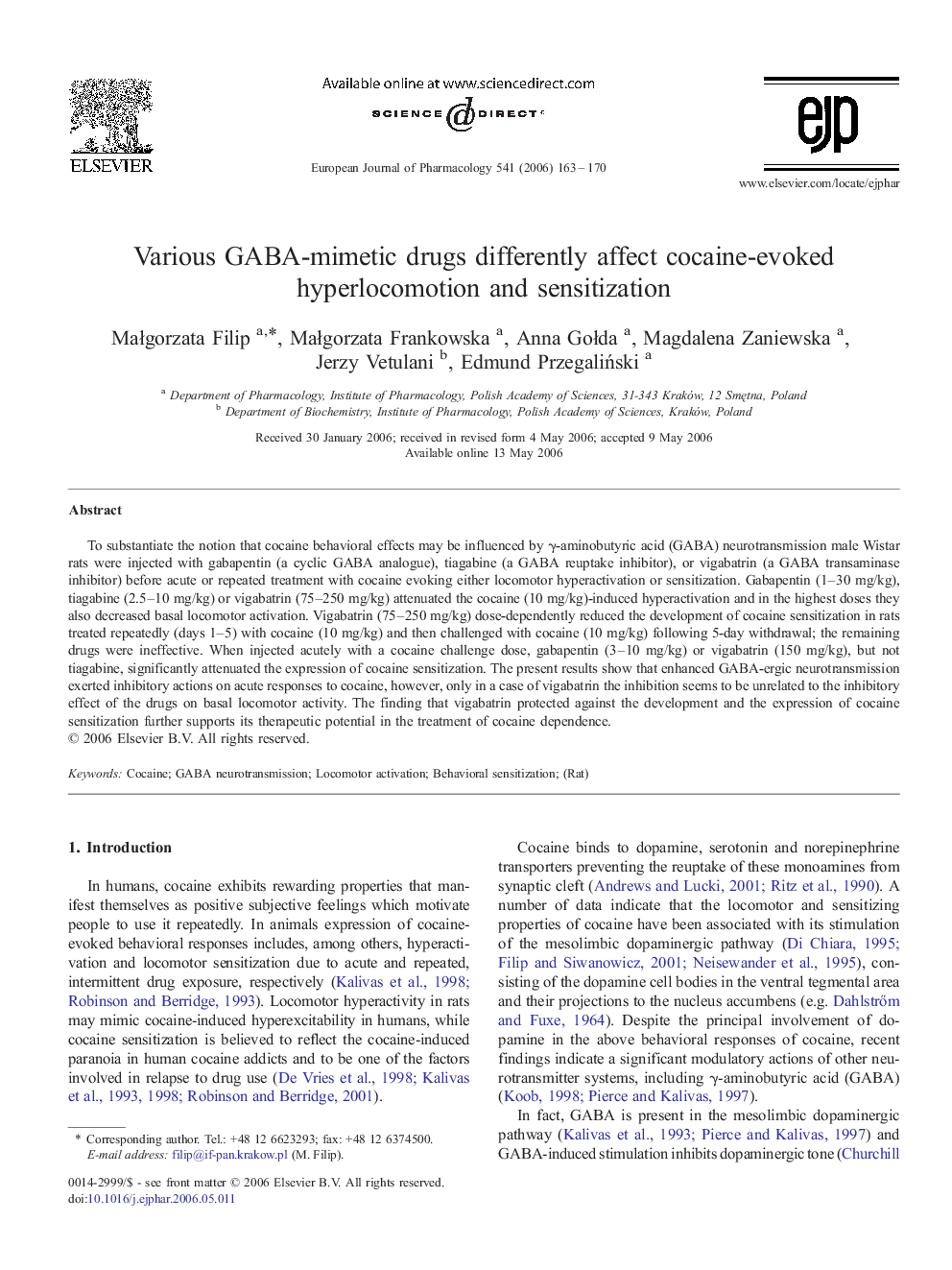| Article ID | Journal | Published Year | Pages | File Type |
|---|---|---|---|---|
| 2537014 | European Journal of Pharmacology | 2006 | 8 Pages |
To substantiate the notion that cocaine behavioral effects may be influenced by γ-aminobutyric acid (GABA) neurotransmission male Wistar rats were injected with gabapentin (a cyclic GABA analogue), tiagabine (a GABA reuptake inhibitor), or vigabatrin (a GABA transaminase inhibitor) before acute or repeated treatment with cocaine evoking either locomotor hyperactivation or sensitization. Gabapentin (1–30 mg/kg), tiagabine (2.5–10 mg/kg) or vigabatrin (75–250 mg/kg) attenuated the cocaine (10 mg/kg)-induced hyperactivation and in the highest doses they also decreased basal locomotor activation. Vigabatrin (75–250 mg/kg) dose-dependently reduced the development of cocaine sensitization in rats treated repeatedly (days 1–5) with cocaine (10 mg/kg) and then challenged with cocaine (10 mg/kg) following 5-day withdrawal; the remaining drugs were ineffective. When injected acutely with a cocaine challenge dose, gabapentin (3–10 mg/kg) or vigabatrin (150 mg/kg), but not tiagabine, significantly attenuated the expression of cocaine sensitization. The present results show that enhanced GABA-ergic neurotransmission exerted inhibitory actions on acute responses to cocaine, however, only in a case of vigabatrin the inhibition seems to be unrelated to the inhibitory effect of the drugs on basal locomotor activity. The finding that vigabatrin protected against the development and the expression of cocaine sensitization further supports its therapeutic potential in the treatment of cocaine dependence.
